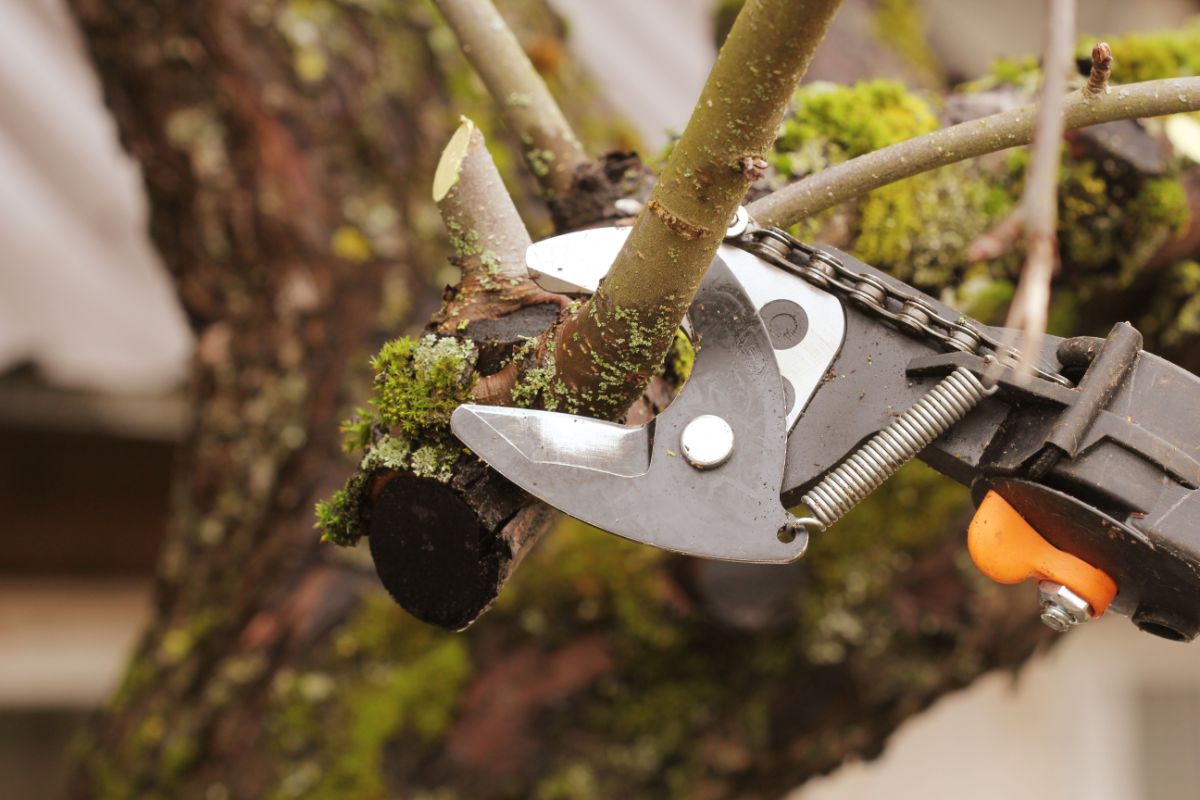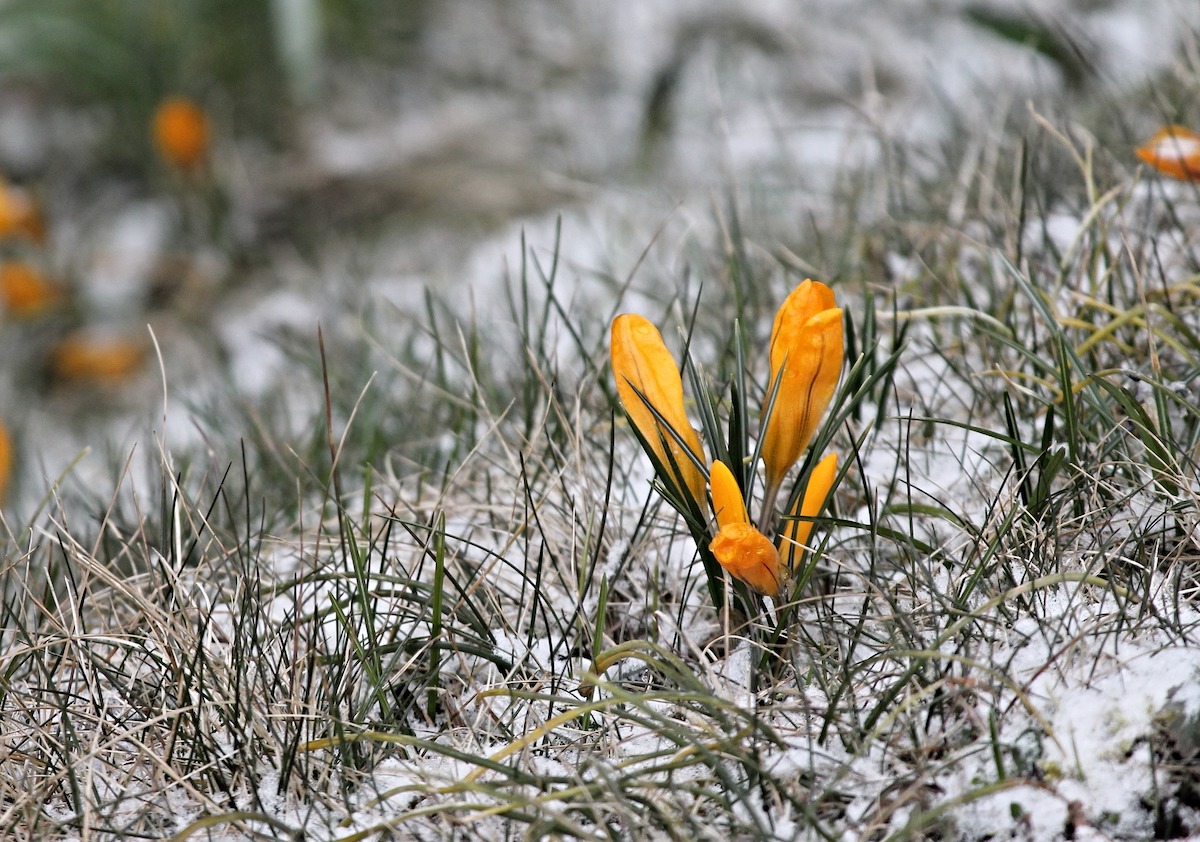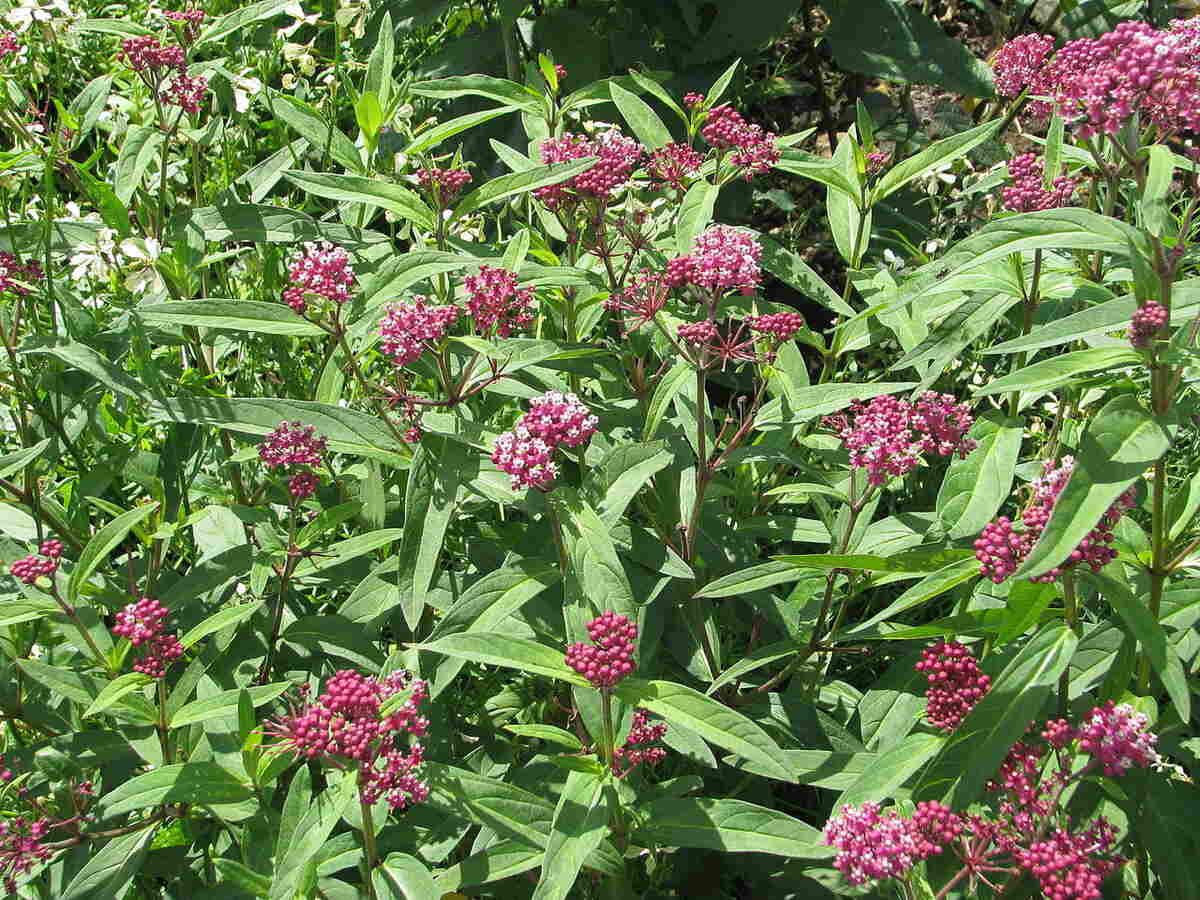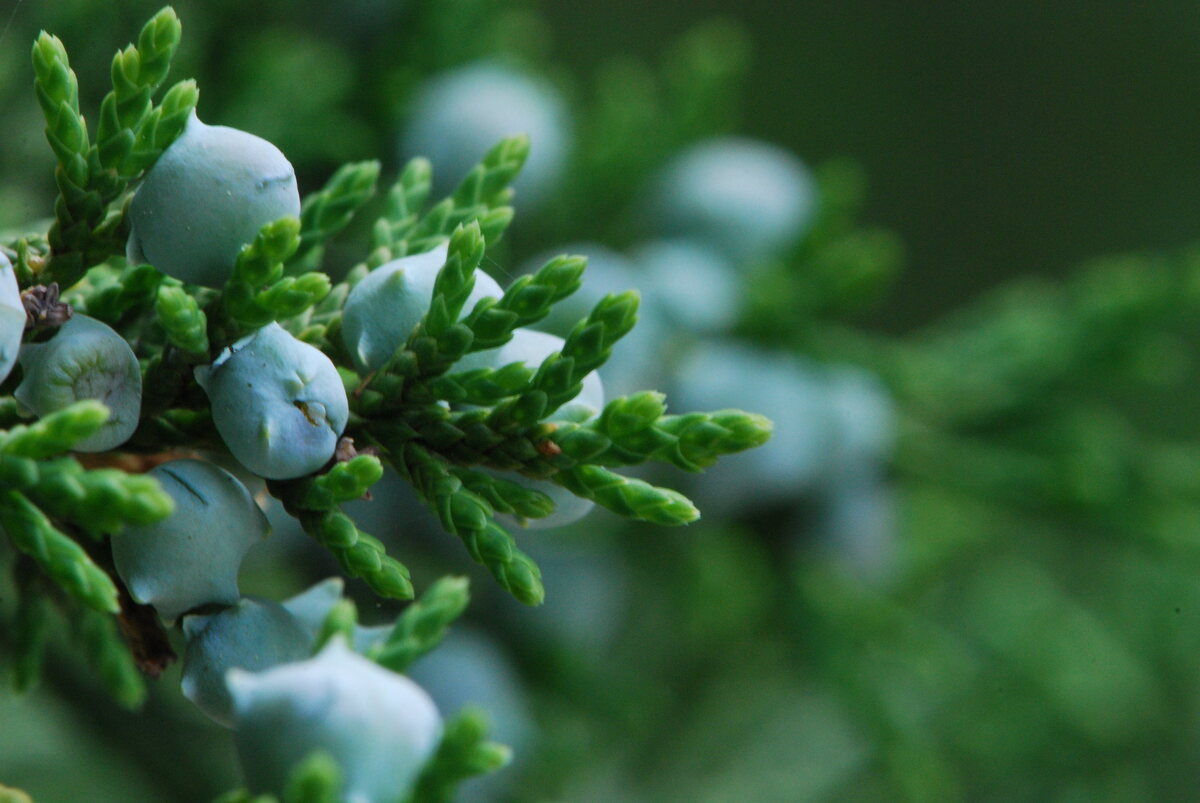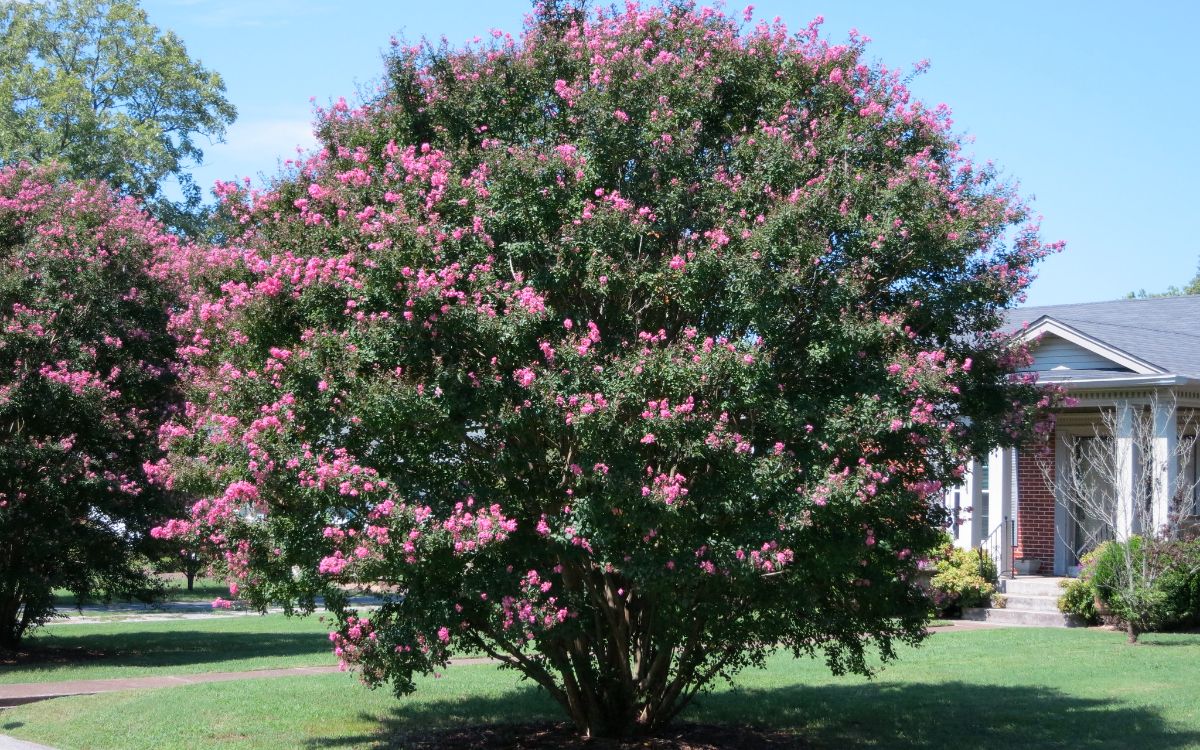
Crape myrtles are beautiful, blossoming trees that add to yards year-round, so don’t let your pruning job wreck the upcoming summer show. We’ll teach you how to prune crape myrtles correctly and enjoy the natural beauty these summer stunners have to offer.
In this article, we’ll cover:
- Best Time to Prune Crape Myrtles
- How to Prune Crape Myrtles in 3 Steps
- What is Crape Murder?
- How Do You Shape Crape Myrtles?
- Should I Remove Crape Myrtle Seedheads?
- FAQ About Crape Myrtles
Best Time to Prune Crape Myrtles
Late winter is the best time to prune crape myrtles. During this time (from mid-February to March in southern states), the plant is nearing the end of its dormancy. Pruning during this period forces new growth just in time for the start of spring.
How to Prune Crape Myrtles in 3 Steps
What most people don’t realize is that pruning crape myrtles is optional. However, it does help because each bud usually only blooms once a season. By pruning, you help get new buds and branches growing in time for summer. Figuring out how to prune is the first step in having a flourishing crape myrtle.
Step 1: Gather Your Pruning Tools
If you start cutting limbs off a tree or shrub, you’d better ensure you’re well equipped. No matter what style you choose for your crape myrtle, you’ll want sharp tools to help with the process:
- Hand pruners for small twigs less than one-half inch thick.
- Loppers, a long-handled tool for bigger branches from 0.5 to 1.5 inches wide.
- A pole pruner, saw, or chainsaw for branches larger than 1.5 inches.
Step 2: Prune Lower Branches First
First, you’ll want to remove any suckers — the new growth or branches coming from the tree’s base. Some homeowners leave these if they want more trunks to work with later on, but most will prune. Next, decide where you want the branching to start. These branches will make up the main bulk of the tree.
Once you’ve decided where the branching will start, trim any limbs below this point. Usually, this means low branches on the bottom third of the crape myrtle. It’s best to prune these branches while they are 0.5 to 1.5 inches wide. Cutting branches when they are younger and smaller helps to avoid leaving any lasting scars on the tree.
Getting these off when the tree is young helps shape it without leaving any lasting stubs. If you want to go the extra mile, it’s often pleasing to the eye to have an odd number of trunks.
Step 3: Prune Higher Branches Next
Once you’re done with the lower branches, take a step back and look at the top two-thirds of your tree. The half-inch rule works for higher branches as well, but sometimes you’ll need to get rid of larger branches. Prune the limbs that grow inward towards the tree and any crossing, rubbing, or dead branches.
Remember, always cut back to a larger branch and leave the tops alone since that’s where the blooms come in. Thinning out the limbs helps to promote growth and bloom in your crape myrtle. Your crape myrtle should have an open canopy when in full bloom.
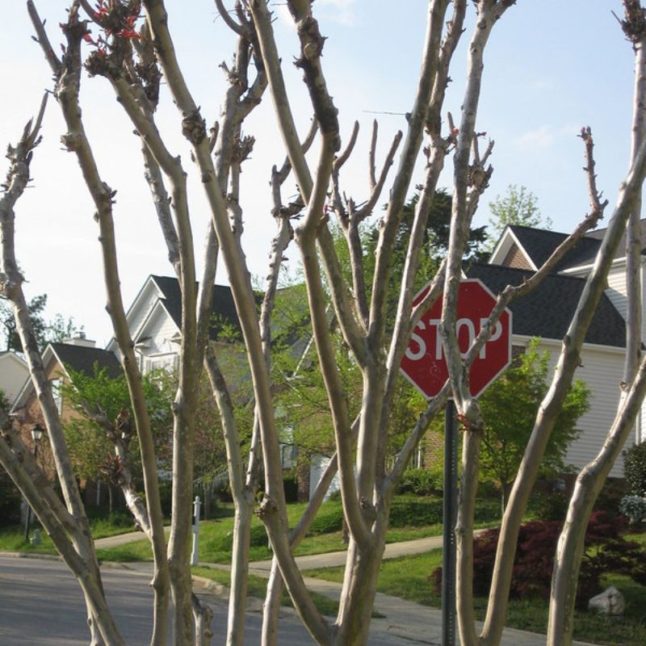
Photo credit: bnilsen / Flickr / CC BY-SA 2.0
What is Crape Murder?
While most pruning choices come from personal preference, there is one aggressive way that you should avoid. The worst way to prune a crape myrtle is through “topping,” also known as “crape murder.” And yes, it is as brutal as it sounds.
Topping happens when someone decides to do severe pruning and cut stems to a random height on the tree instead of pruning to another branch, stem, or bud. Bare stems can start to decay this way, causing irreversible damage to the tree.
If you cut the tree back severely, branch strength and bloom time also suffer. Shoots that grow after that aggressive cutting are too weak to support flower buds adequately. (These poorly attached stems often snap in strong winds.) You’ll also reduce the tree’s bloom time since end shoots produce only one primary flower cluster instead of several.
Many homeowners choose topping over proper pruning because the tree or shrub is outgrowing its initial spot in the yard. Consider this before planting a crape myrtle in a spot that it might outgrow.
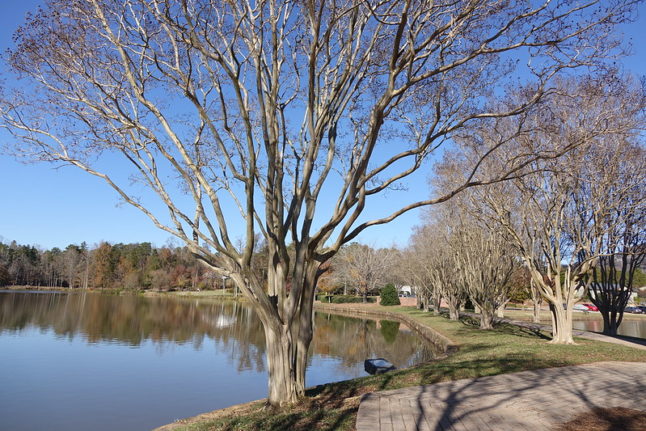
How Do You Shape Crape Myrtles?
The tree has been bought and planted, and you know the basics of pruning. Now what? The next step is deciding what shape you want your crape myrtle to take.
The best way to prune any plant is to mimic its natural shape. Crape myrtles have an upright form with multiple trunks that fan outward from the center. The degree to which you alter its natural shape is up to you, but remember that the more you deviate from a plant’s natural form, the more work you’ll do.
Common crape myrtle forms include:
- Single trunk
- Multi-trunk
- Natural look
Single Trunk
While widely considered one of the most pleasing to the eye, this shape involves the most continuous pruning. For this look, pick a center trunk to be the tree’s main trunk. From there, you can cut any other limbs at the base. This includes extra stems, including suckers, protruding from the ground.
This style makes the tree’s growth more concentrated and is good if you’re going for a tight, symmetrical look. It’s best to start this method when the tree is young because you’ll have less and less trimming to do with the main branches as the tree grows.
Multi-Trunk
The multi-trunk shape is the most common pruning method for crape myrtles. This involves yearly pruning to maintain the tree’s spacious, clean look. There are several things to prune with this shape:
- Cut off any suckers growing from the base of the trunk and lower branches.
- Remove any rubbing, crossing, and inward-facing branches.
- As the tree grows, gradually cut off side branches that extend from the main base.
- Remove lone or clustered branches while they’re small.
- Prune unwanted branches early on before they become thick.
It sounds like a lot, but there will be less to trim each year as the tree grows. A good tip for this style is that you have enough space when a bird can fly freely between the branches.
Natural Look
This style choice is the least intensive of the three and, conveniently, has been a popular style choice over the last few years. It’s a simplistic style because you can let it grow and branch into its natural shape.
Your crape myrtle will still grow and bloom with water and fertilizer. Pruning isn’t necessary for the growth of flowers, but it does stimulate the growth of your tree or shrub if it’s looking bare. If you want to prune, you can cut off dead branches or awkward twigs to fit your preference.
Should I Remove Crape Myrtle Seedheads?
Many people choose to leave the seedheads at the ends of the branches. They add an attractive look during winter and spring before the trees start to bloom. The flower clusters push the seed pods off in the spring to make room for the blossoms. Some homeowners prefer to take them off before this happens.
If you want to remove the seedheads, you can start by taking a cut just above where the leaf meets the stem or above a lateral bud if no leaf is available. This doesn’t promote any new growth in the tree and is merely a cosmetic decision.
FAQ About Crape Myrtles
Crape myrtles love humidity, do well in most soils, and prefer 6 hours of sunlight. Therefore, they grow best in the southern states in warm seasons. They thrive in zones 7-10 but can live in zone six if they are potted and are able to be taken in during the winter months.
The average height varies depending on the cultivar. The size can vary drastically depending on what type you get. Crape myrtles range in height from 3 feet to over 30 feet.
When is the best time to plant crape myrtles?
While people can plant crape myrtles at any time of the year, they plant best in the early spring because the conditions are more favorable for new plants. This time is the end of the dormant season, just before the warmer months, when the plant will thrive.
Make the Cut
It’s easy to feel overwhelmed with all the possibilities of pruning the beautiful crape myrtles. The tools and resources are at your disposal, but sometimes an extra set of hands is all you need to make that initial cut. Hire a professional for any pruning or lawn care services you might need.
Main photo credit: vhines200 / Flickr / CC BY-ND 2.0
